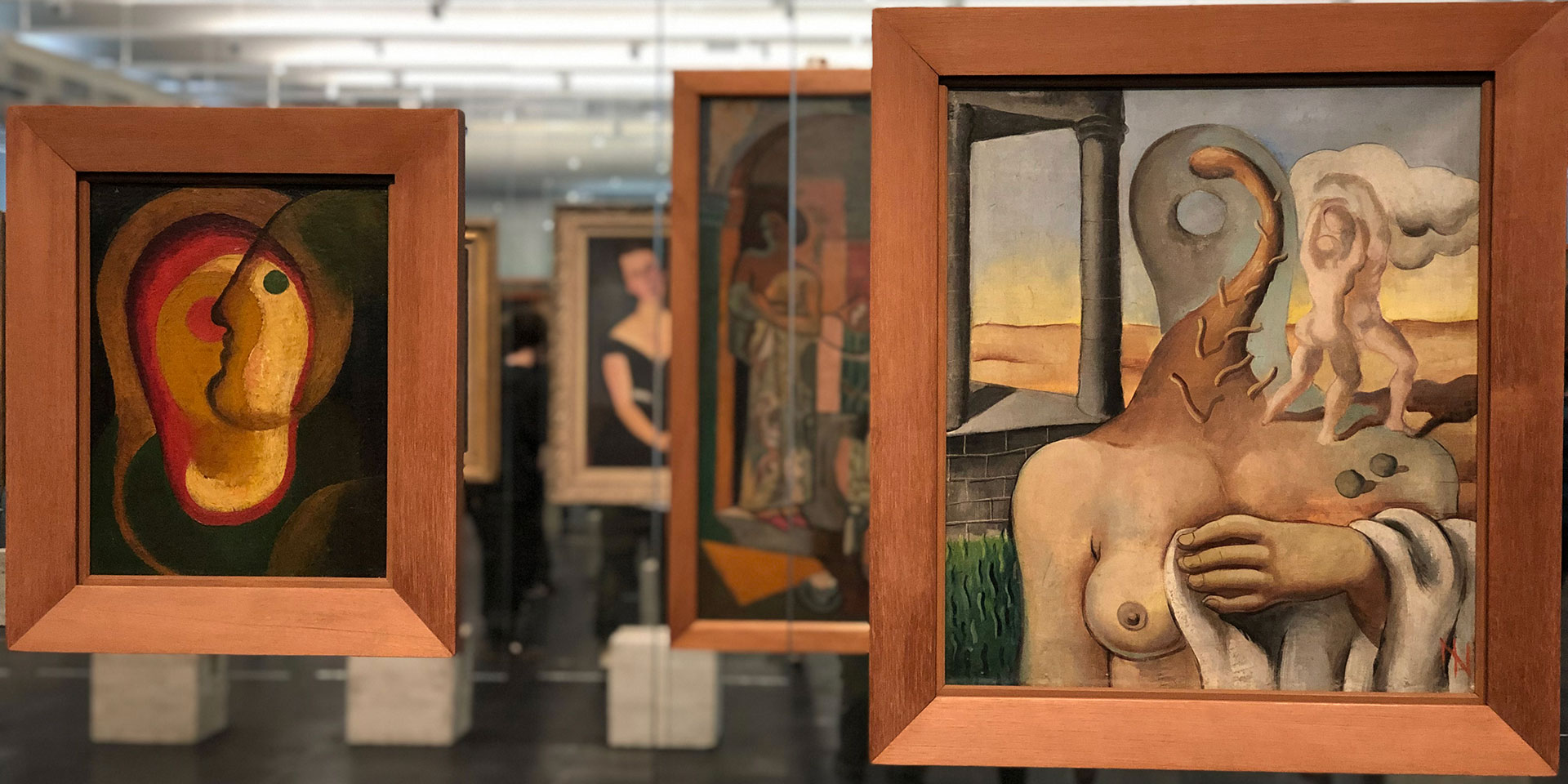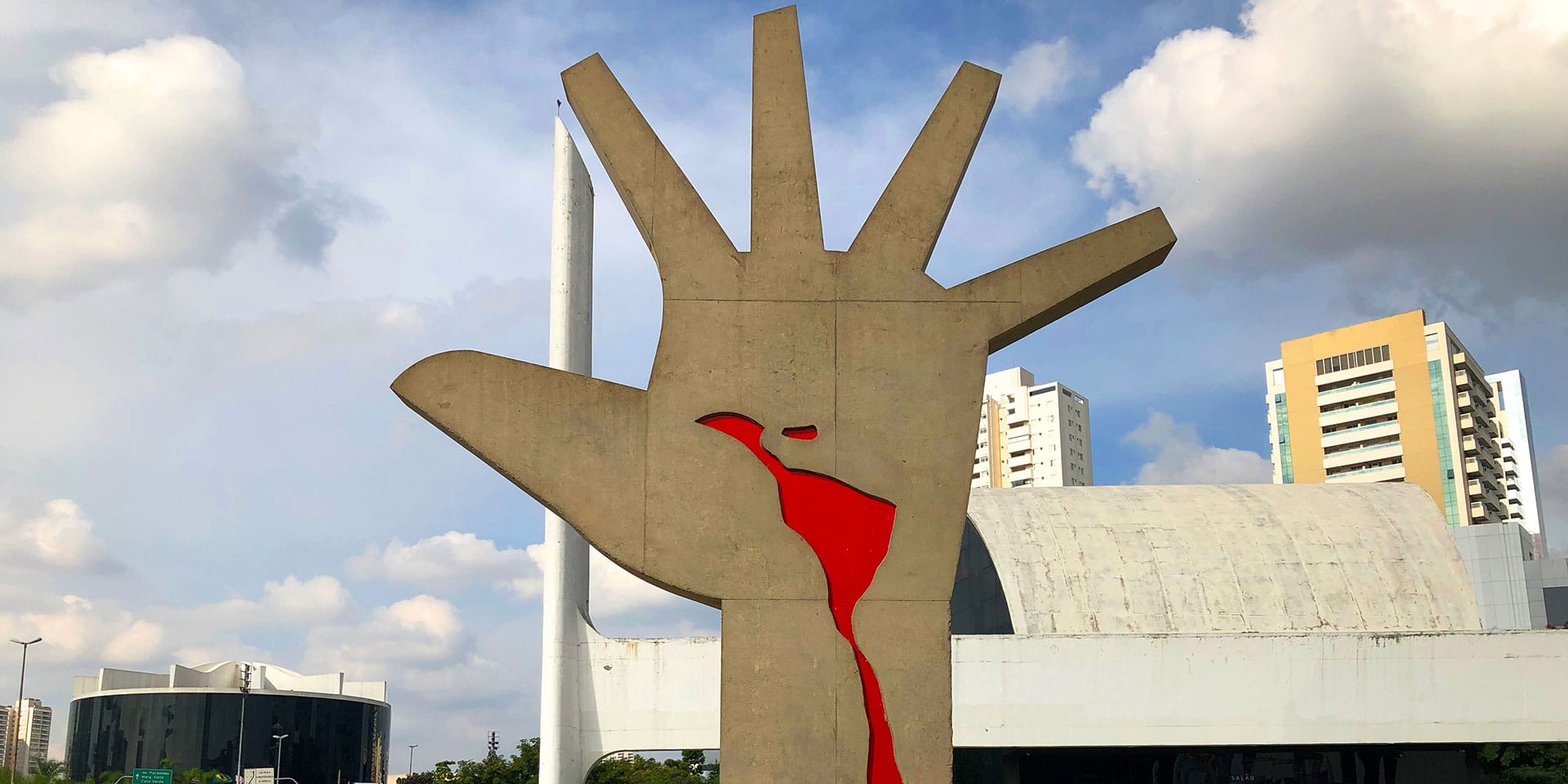To some, São Paulo may be a concrete jungle, but it’s also a melting pot of cultures in which art plays a fundamental role. Such is its importance that the world’s second most important art bienniale —only surpassed by that of Venice— takes place at Ibirapuera Park, the city’s green lung.
Like any big city, São Paulo is home to more than a hundred museums that would be impossible to visit on a single trip, so here’s a short selection of those worth exploring on account of their collections, construction and/or temporary exhibitions.
Museu de Arte de São Paulo Assis Chateaubriand
The building that houses it, designed by the architect Lina Bo Bardi, is a work of art in and of itself, and one of Avenida Paulista’s most iconic buildings. Among its collection of over eight thousand pieces, you can find the most important Western art collection in Latin America.

The main room has no walls and the paintings are displayed in glass easels, which makes them look like they’re suspended in the air. The MASP opens from Tuesday to Sunday at 10 in the morning.
Pinacoteca do Estado
This venue has a collection of almost 10 thousand works, mainly by Brazilian artists of the 19th and 20th centuries. It’s located in the Jardim da Luz, the oldest park in the city, where around 50 sculptures that belong to the museum are exhibited.
La Pina, as it’s affectionately known, is located in an area that’s not very safe, so we recommend you follow the museum’s instructions: store away cameras and telephones before leaving the premises.
Museu de Arte Contemporânea da Universidade de São Paulo
The building where it’s located is one of the works by renowned architect Oscar Niemeyer. Once you go in, a cat that’s almost 23 feet long —and purrs when you touch it
— takes you on an trip across 8 stories full of extraordinary contemporary art.
Temporary exhibitions and a collection of 20th century works by Picasso, Kandinsky, Klee, Chagal and Matisse make the MAC a compulsory stop in São Paulo.
Tomie Ohtake Institute
Named after the famed Japanese-Brazilian artist and designed by her son, this place looks striking on account of the curves and colors of its façade.
The interior doesn’t fall far behind; in its 25,000 square feet there is a large hall and 7 exhibition halls that have hosted the works of internationally renowned personalities such as Yayoi Kusama, Joan Miró and Salvador Dalí.
Located in the neighborhood of Pinheiros, the Tomie Ohtake Institute focuses on postwar art.
Museu da Imagem e do Som de São Paulo
The Museum of Image and Sound, known as MIS, was created in 1970 with the aim of documenting and studying contemporary pieces of art that, due to their audiovisual nature, rarely have a place in traditional museums. Its impressive collection is made up of more than 200,000 works of photography, cinema, video, sound records and graphic pieces.
São Paulo also has some thematic museums that will delight those interested in their subject matter. The Museu do Futebol is an essential stop for soccer fans. The Museu Afro Brazil seeks to increase the visibility of the African influence in the construction of this South American country.

The Memorial of Latin America, another work by Niemeyer, is a cultural complex that has a gallery in which exhibitions of Latin American culture are mounted. Its monumental hand highlights the oppression the land has suffered with the map of the region in red ink, symbolizing the bloodshed.
Immense and intense, São Paulo is undoubtedly the cultural capital of South America.



